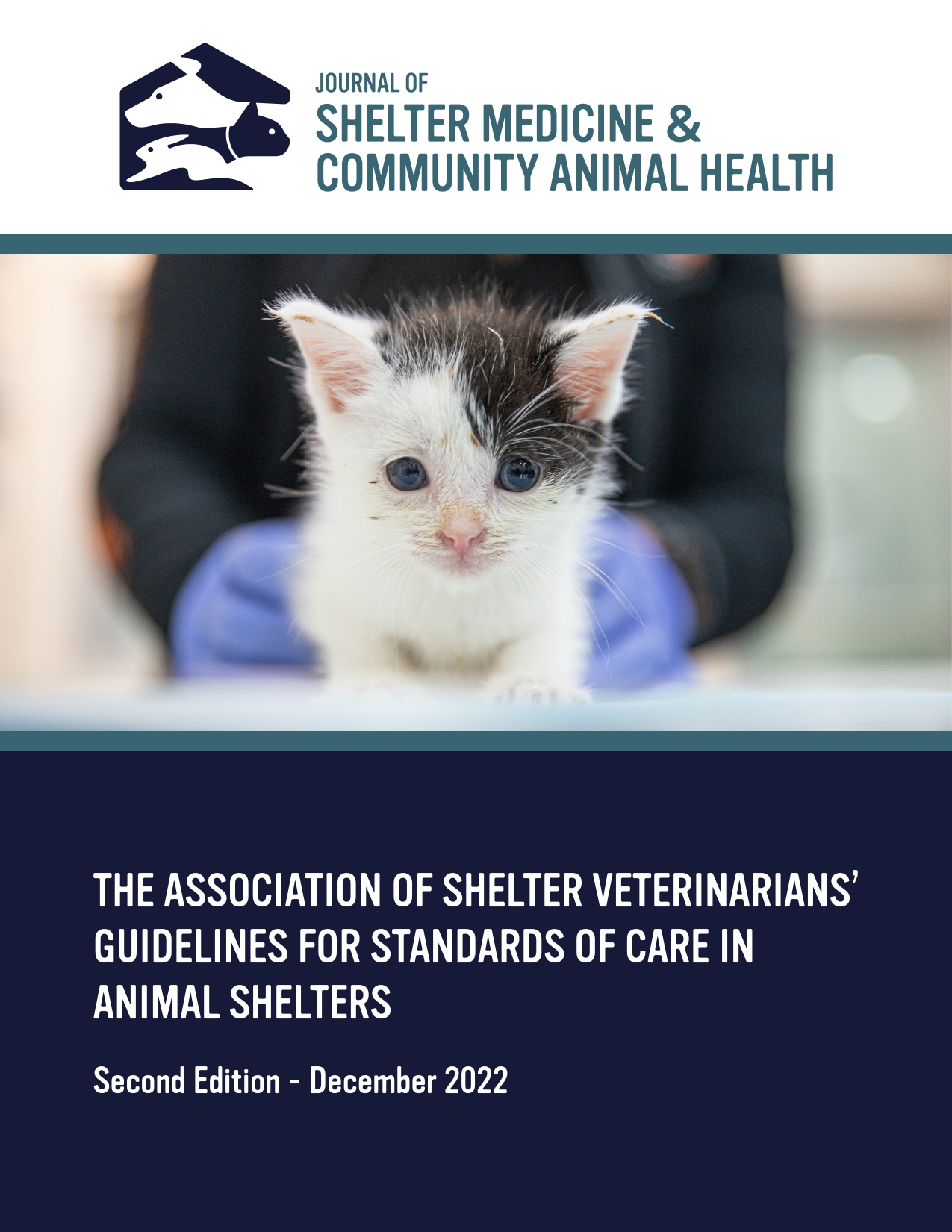Observed Benefits of a Rehome Web Application For Harder-To-Adopt Pet Populations
DOI:
https://doi.org/10.56771/jsmcah.v4.69Keywords:
online rehoming, peer-to-peer rehoming, senior cats, senior dogs, large dogs, animal shelter, animal adoption, animal length of stay, animal welfareAbstract
Introduction: Owner-to-owner rehoming platforms such as Home-Home.org, Getyourpet.com, and Rehome.adoptapet.com (hereafter, Rehome) were launched in 2016 and 2017 as alternatives to traditional shelter intake. Previous research identified characteristics that predict an animal’s likelihood of successful diversion from shelter intake via person-to-person rehoming platforms. These findings suggested that certain populations – specifically senior animals and large dogs – have lower odds of diversion. This study builds on this by evaluating whether harder-to-adopt animals can benefit from being listed on Rehome.
Methods: Using data from Rehome and 23 shelters participating in the Human Animal Support Services (HASS) initiative, this study used Cox regression, chi-square tests, and two outcome metrics: median length of stay (LOS) and adoption rate. Analyses focused on harder-to-adopt animals – defined as senior cats, senior dogs, and large dogs – and compared adoption rates between animals listed on Rehome and those surrendered to shelters.
Results: Animals on Rehome had longer LOS than animals in the shelter. Cox regression results further indicated that animals on Rehome had lower probabilities of adoption at any given time compared to those in shelters. Overall, adoption rates were higher in shelters, although considerable variability existed among shelters; whereas Rehome’s performance remained relatively stable. In some regions, Rehome had higher adoption rates than the corresponding local shelter.
Conclusion: The results imply that harder-to-adopt animals have a better chance of finding a new home in shelters than through an online rehoming website. However, harder-to-adopt animals still find success on Rehome. Considering that Rehome results in efficiency gains for shelter systems and a reduced-stress environment for animals, if properly expanded and utilized by shelter communities, Rehome could serve as a useful complementary tool for shelters. It may also help reduce shelter intakes, especially of animals traditionally classified as harder-to-adopt.
Downloads
References
1. FY-Q1-Q4-Report-FINAL.pdf. Accessed Aug 15, 2023. https://www.shelteranimalscount.org/wp-content/uploads/2023/01/FY-Q1-Q4-Report-FINAL.pdf
2. 2017-Canadian-Animal-Shelter-Statistics.pdf. Accessed Aug 15, 2023. https://humanecanada.ca/wp-content/uploads/2020/03/2017-Canadian-Animal-Shelter-Statistics.pdf
3. Morris K, Rodriguez J, Davis J, Hill S, Wolf P, Hawes S. Trends in Intake and Outcome Data From U.S. Animal Shelters From 2016 to 2020. Front Vet Sci. 2022;9:863990. doi: 10.3389/fvets.2022.863990
4. Jensen JBH, Sandøe P, Nielsen SS. Owner-Related Reasons Matter more than Behavioural Problems – A Study of Why Owners Relinquished Dogs and Cats to a Danish Animal Shelter from 1996 to 2017. Animals. 2020;10(6):1064. doi: 10.3390/ani10061064
5. Alberthsen C, Rand J, Morton J, Bennett P, Paterson M, Vankan D. Numbers and Characteristics of Cats Admitted to Royal Society for the Prevention of Cruelty to Animals (RSPCA) Shelters in Australia and Reasons for Surrender. Animals. 2016;6(3):23. doi: 10.3390/ani6030023
6. Eagan BH, Gordon E, Protopopova A. Reasons for Guardian-Relinquishment of Dogs to Shelters: Animal and Regional Predictors in British Columbia, Canada. Front Vet Sci. 2022;9:857634. doi: 10.3389/fvets.2022.857634
7. DiGiacomo N, Arluke A, Patronek G. Surrendering Pets To Shelters: The Relinquisher’s Perspective. Anthrozoös. 1998;11(1):41–51. doi: 10.1080/08927936.1998.11425086
8. Weiss E, Slater M, Garrison L, et al. Large Dog Relinquishment to Two Municipal Facilities in New York City and Washington, D.C.: Identifying Targets for Intervention. Animals. 2014;4(3):409–433. doi: 10.3390/ani4030409
9. Weiss E, Gramann S, Spain CV, Slater M. Goodbye to a Good Friend: An Exploration of the Re-Homing of Cats and Dogs in the U.S. Open Journal of Animal Sciences. 2015;5(4):435–456. doi: 10.4236/ojas.2015.54046
10. Stephen JM, Ledger RA. A Longitudinal Evaluation of Urinary Cortisol in Kennelled Dogs, Canis Familiaris. Physiol Behav. 2006;87(5):911–916. doi: 10.1016/j.physbeh.2006.02.015
11. Arhant C, Wogritsch R, Troxler J. Assessment of Behavior and Physical Condition of shelter Cats as Animal-Based Indicators of Welfare. J Vet Behav. 2015;10(5):399–406. doi: 10.1016/j.jveb.2015.03.006
12. cost-for-care-at-apa.pdf. Accessed Aug 15, 2023. https://www.maddiesfund.org/assets/grants/FinalReports/cost-for-care-at-apa.pdf
13. Brown WP, Davidson JP, Zuefle ME. Effects of Phenotypic Characteristics on the Length of Stay of Dogs at Two No Kill Animal Shelters. J Appl Anim Welf Sci. 2013;16(1):2–18. doi: 10.1080/10888705.2013.740967
14. Normando S, Stefanini C, Meers L, Adamelli S, Coultis D, Bono G. Some Factors Influencing Adoption of Sheltered Dogs. Anthrozoos. 2006;19:211–224. doi: 10.2752/089279306785415556
15. Brown WP, Morgan KT. Age, Breed Designation, Coat Color, and Coat Pattern Influenced the Length of Stay of Cats at a No-Kill Shelter. J Appl Anim Welf Sci. 2015;18(2):169–180. doi: 10.1080/10888705.2014.97696
16. Gunter LM, Barber RT, Wynne CDL. What’s in a Name? Effect of Breed Perceptions & Labeling on Attractiveness, Adoptions & Length of Stay for Pit-Bull-Type Dogs. PLoS One. 2016;11(3):e0146857. doi: 10.1371/journal.pone.0146857
17. Lepper M, Kass PH, Hart LA. Prediction of Adoption Versus Euthanasia among Dogs and Cats in a California Animal Shelter. J Appl Anim Welf Sci. 2002;5(1):29–42. doi: 10.1207/S15327604JAWS0501_3
18. Workman MK, Hoffman CL. An Evaluation of the Role the Internet Site Petfinder Plays in Cat Adoptions. J Appl Anim Welf Sci. 2015;18(4):388–397. doi: 10.1080/10888705.2015.1043366
19. Siettou C, Fraser IM, Fraser RW. Investigating Some of the Factors That Influence ‘Consumer’ Choice When Adopting a Shelter Dog in the United Kingdom. J Appl Anim Welf Sci. 2014;17(2):136–147. doi: 10.1080/10888705.2014.883924
20. Cain CJ, Woodruff KA, Smith DR. Factors Associated with Shelter Dog Euthanasia versus Live Release by Adoption or Transfer in the United States. Animals. 2021;11(4):927. doi: 10.3390/ani11040927
21. Zito S, Paterson M, Vankan D, Morton J, Bennett P, Phillips C. Determinants of Cat Choice and Outcomes for Adult Cats and Kittens Adopted from an Australian Animal Shelter. Animals. 2015;5(2):276–314. doi: 10.3390/ani5020276
22. Patronek GJ, Crowe A. Factors Associated with High Live Release for Dogs at a Large, Open-Admission, Municipal Shelter. Animals. 2018;8(4):45. doi: 10.3390/ani8040045
23. Lampe R, Witte TH. Speed of Dog Adoption: Impact of Online Photo Traits. J Appl Anim Welf Sci. 2015;18(4):343–354. doi: 10.1080/10888705.2014.982796
24. Reese LA, Skidmore M, Dyar W, Rosebrook E. No Dog Left Behind: A Hedonic Pricing Model for Animal Shelters. J Appl Anim Welf Sci. 2017;20(1):52–64. doi: 10.1080/10888705.2016.1236693
25. Lord E, Olynk Widmar N, Litster A. Economic Impacts of Adoption and Fundraising Strategies in Animal Shelters. Prev Vet Med. 2014;113(4):423–429. doi: 10.1016/j.prevetmed.2013.12.002
26. Mohan-Gibbons H, Weiss E, Garrison L, Allison M. Evaluation of a Novel Dog Adoption Program in Two US Communities. PLoS One. 2014;9(3):e91959. doi: 10.1371/journal.pone.0091959
27. Gunter LM, Feuerbacher EN, Gilchrist RJ, Wynne CDL. Evaluating the Effects of a Temporary Fostering Program on Shelter Dog Welfare. PeerJ. 2019;7:e6620. doi: 10.7717/peerj.6620
28. Ly LH, Protopopova A. Predictors of Successful Diversion of Cats and Dogs away from Animal Shelter Intake: Analysis of Data from a Self-Rehoming Website. Animal Welfare. 2023;32:e13. doi: 10.1017/awf.2023.8
29. Elements of HASS. HASS. Accessed Aug 15, 2023. https://www.humananimalsupportservices.org/about/elements-of-hass/
30. About Human Animal Support Services. HASS. Accessed Aug 15, 2023. https://www.humananimalsupportservices.org/about-human-animal-support-services/
31. Wolf PJ, Levy J, Amirian ES, Horecka K. Editorial: Reimagining Animal Sheltering: Support Services and Community-Driven Sheltering Methods. Front Vet Sci. 2022;9. Accessed Aug 15, 2023. https://www.frontiersin.org/articles/10.3389/fvets.2022.1011202
32. Calculations. Shelter Animals Count. Accessed Apr 6, 2025. https://www.shelteranimalscount.org/explore-the-data/elementor-5427/calculations/
33. Length of Stay Manual. Best Friends Animal Society – Save Them All. Accessed April 6, 2025. https://bestfriends.org/network/resources-tools/length-stay-manual
34. Surrender Your Pet – Animal Shelter. seattle.gov. Accessed Dec 28, 2024. https://www.seattle.gov/animal-shelter/find-an-animal/adopt/surrender-your-pet
35. Rehoming Support. Cabot Animal Support Services – CASS. Accessed Dec 28, 2024. https://cabotanimalsupportservices.com/services/rehoming-support/
36. Surrender a Pet. Be Dallas 90. Accessed Dec 28, 2024. https://bedallas90.org/home/rehome/
37. Info About Surrendering Your Pet. Humane Rescue Alliance. Accessed Dec 28, 2024. https://www.humanerescuealliance.org/surrender-your-pet
38. Dog-Cat-Foster-Care-Report-2022.pdf. Accessed Dec 20, 2024. https://www.maddiesfund.org/assets/research/Dog-Cat-Foster-Care-Report-2022.pdf

Additional Files
Published
Issue
Section
License
Copyright (c) 2025 John Cornelison, Sue Neal, Kevin Horecka

This work is licensed under a Creative Commons Attribution 4.0 International License.









